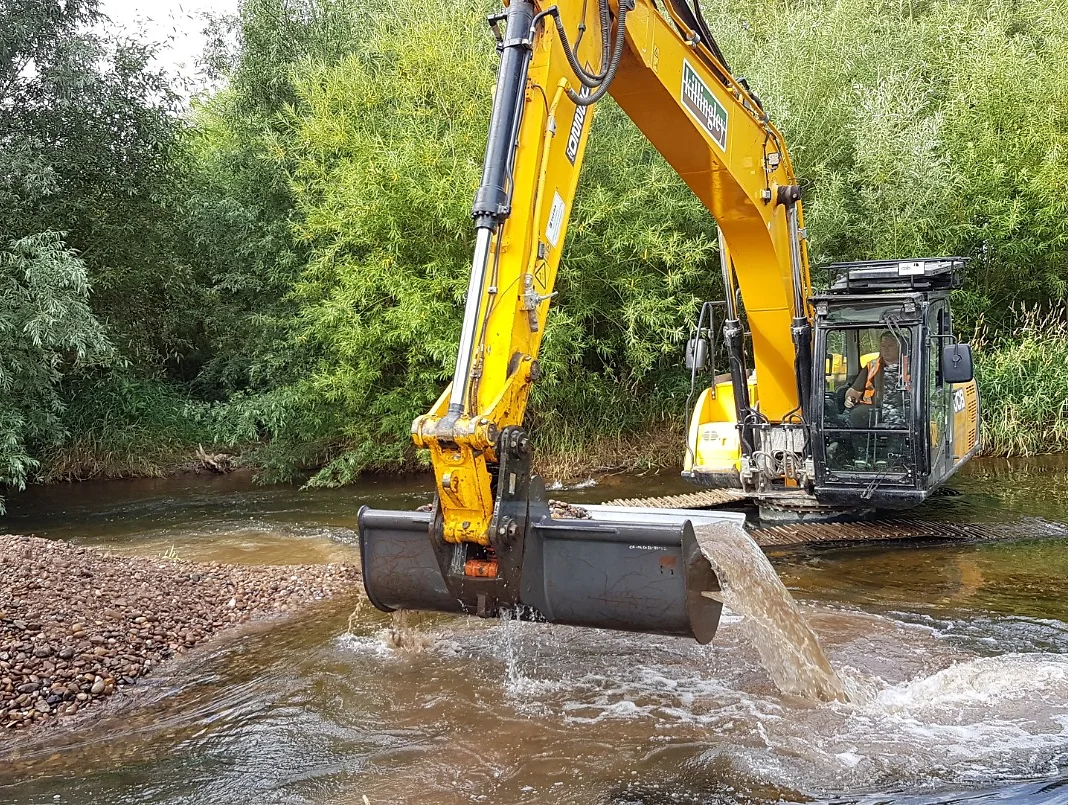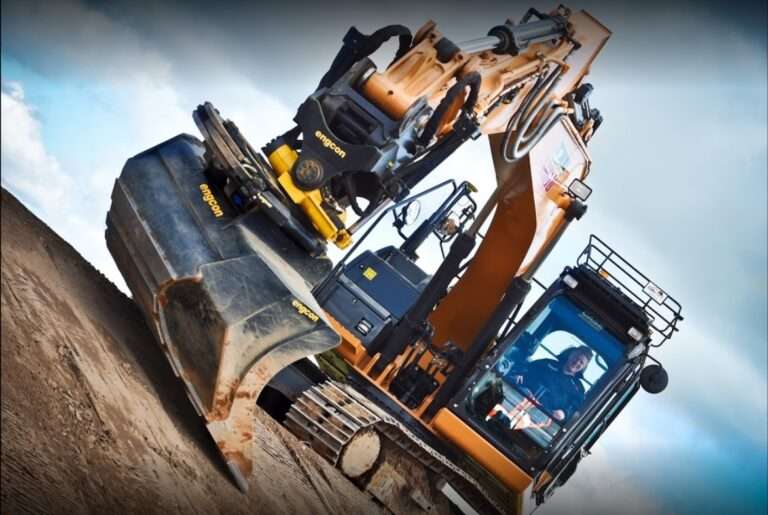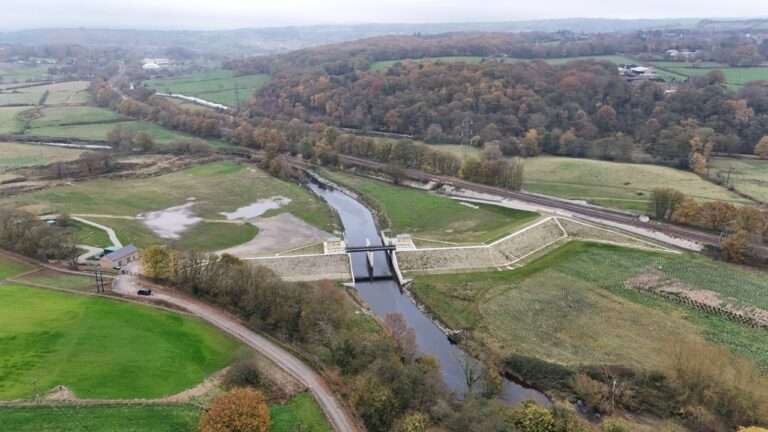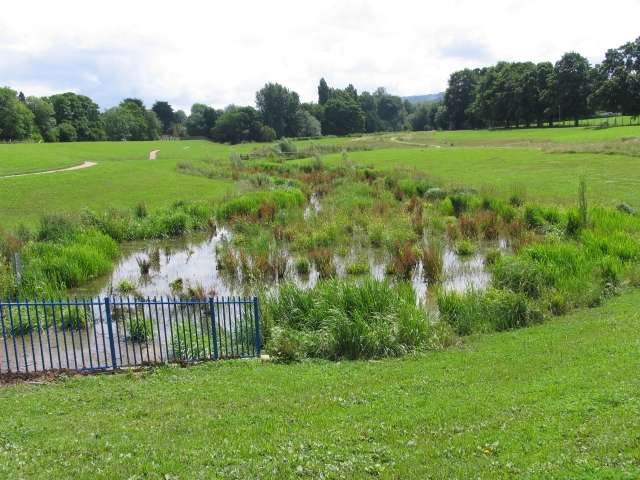From Excavation to Engineering: The Role of Technical Earthworks in Flood Alleviation Schemes
It’s easy to think of floods as a natural disaster you can’t do much about. Water comes, it goes where it wants, and everyone just has to live with the mess. But that’s not quite true anymore. Across the UK, the way we manage flood risk has changed – less sandbagging at the last minute, more long-term engineering and planning.
And right at the centre of that? Technical earthworks.
These are the big, unseen operations that shape the land – excavations, embankments, cut-off trenches, stabilised slopes – that form the physical backbone of flood defence projects. They’re the reason new housing developments don’t turn into lakes every winter.
I’ve seen projects where a few metres of precision excavation and properly compacted fill have changed everything. The difference between a soggy field and a working flood basin can come down to how well the earth was handled.
So, let’s unpick that – what exactly is the role of technical earthworks in flood alleviation, and why does it matter?
Understanding Flood Alleviation
Before getting into the engineering, it’s worth understanding what a “flood alleviation scheme” really involves. It’s not just a big wall to keep water out (though sometimes it is). It’s about managing where and how water moves across a landscape.
That means slowing it down, storing it, or guiding it somewhere safe. Depending on the site, that could involve:
- Flood storage basins – large excavated areas that temporarily hold excess rainwater
- Earth embankments and levees – raised barriers to contain rising water levels
- Diversion channels – re-routing water through controlled paths
- SuDS (Sustainable Drainage Systems) – ponds, swales, wetlands, and infiltration zones
Every one of those relies on carefully engineered groundworks. The shape, compaction, and stability of the soil all determine whether a flood scheme does its job or fails the first time it rains hard.
And the UK gets a lot of rain.
The Technical Earthworks Connection
So where do technical earthworks come in?
In simple terms: they turn the drawings into reality. They’re what take a flood model from a simulation on a screen to something that holds back a river in January.
That includes:
- Bulk excavation and cut-to-fill balance
- Construction of flood bunds, embankments, and detention basins
- Ground stabilisation and compaction
- Installation of clay cores and impermeable liners
- Formation of channels, outfalls, and overflow structures
Technical earthworks are about precision. If a basin isn’t excavated to the correct depth, it won’t store the expected volume of water. If an embankment isn’t compacted properly, it’ll settle or breach. There’s no room for “close enough”.
To see how this ties into wider practice, you can refer to the section on technical earthworks, which covers the broader engineering and environmental techniques behind this type of work.
From Digging to Design
You might imagine the process starts with a digger in the mud. In reality, it starts long before that – in the design phase.
Engineers analyse flood maps, soil types, and hydrology data to plan how much material will be needed and where it’ll go. Cut-and-fill modelling is used to balance excavation and placement, minimising the need for imported material.
When you think about it, flood defence is really an exercise in balance. Move too much soil and you change the natural drainage. Move too little and you don’t get the storage capacity needed. The key is precision – both in modelling and in execution.
Modern GPS-guided earthmoving systems now allow for millimetre accuracy across large sites. Operators know exactly where to cut and where to fill, following digital terrain models rather than relying on traditional pegs and stringlines. That accuracy saves not just time but money – and reduces the risk of failure later.
Real-World Example – Flood Storage Basin Construction
Let’s take a typical flood storage basin as an example.
Imagine a low-lying area on the edge of a town, vulnerable to runoff during storms. Engineers decide to build a basin to temporarily hold excess water before releasing it back into the river at a controlled rate.
The earthworks sequence might look something like this:
- Topsoil strip and stockpile – to preserve it for later reinstatement.
- Bulk excavation – forming the basin to design depth and profile.
- Embankment formation – using the excavated spoil to create perimeter bunds.
- Clay core or liner installation – to ensure water retention.
- Outfall and spillway construction – controlling discharge and overflow.
- Topsoil reinstatement and seeding – stabilising surfaces and encouraging vegetation.
Every step affects the next. If the excavation isn’t right, the embankment won’t be right. If the embankment fails, the basin fails. It’s a chain of precision.
| Key Stage | Purpose | Common Risks if Poorly Executed |
|---|---|---|
| Excavation | Form basin shape & storage volume | Incorrect capacity or ponding |
| Compaction | Ensure stability of fills | Slippage or settlement |
| Clay core | Prevent seepage | Leakage or failure under pressure |
| Drainage | Control inflow/outflow | Blockages or erosion |
| Landscaping | Stabilise soil & aid biodiversity | Surface erosion or poor establishment |
In short – technical earthworks don’t just support flood schemes. They are the scheme.
Engineering Meets Environment
Flood alleviation isn’t just about moving soil – it’s about respecting the landscape.
Good design doesn’t just stop floods; it can also create valuable habitats. Flood basins double as wetlands. Swales and channels can become wildlife corridors. Embankments, when seeded correctly, stabilise soil while supporting pollinators.
I find that the best projects are the ones that think beyond the next storm. Because yes, flood control is vital – but so is leaving behind something that improves biodiversity and looks natural in the landscape.
That balance between engineering and ecology is where technical earthworks really shine.
Challenges in Flood Earthworks
Of course, it’s not all smooth sailing (or digging). Flood schemes bring unique challenges that standard bulk earthworks don’t.
- Variable ground conditions: Floodplains are often silty or waterlogged. Stabilisation is key.
- Weather delays: Rain affects moisture content, compaction, and safety.
- Environmental constraints: Many schemes sit within sensitive ecological zones.
- Tight tolerances: Flood volumes and slopes must match design data precisely.
I’ve seen projects grind to a halt because the moisture content of fill exceeded spec by 2%. You can’t fight nature – you have to work with it. That means using lime or cement stabilisation, temporary drainage, and well-timed sequencing.
The real art is managing uncertainty. Every flood scheme teaches you that water always finds a way – your job is to make sure it finds the right one.
The Role of Sustainable Design
Sustainability threads through every part of modern flood engineering.
Reusing excavated material on-site is now standard practice. It saves transport emissions, reduces waste, and helps maintain local soil balance. Even the vegetation on finished embankments is chosen to support long-term stability and biodiversity.
| Sustainable Practice | Benefit |
|---|---|
| Reuse of site-won material | Lower emissions, reduced costs |
| GPS-guided excavation | Minimal waste and fuel efficiency |
| Engineered topsoil & seeding | Erosion control and habitat creation |
| On-site drainage solutions | Reduced off-site discharge |
| Soil stabilisation | Less import/export of material |
When you see a flood storage basin a few months after completion – grassed over, full of wildflowers, maybe with a few ducks – it’s easy to forget it’s a piece of engineered infrastructure. That’s the ideal outcome: functional, unobtrusive, sustainable.
Collaboration Across Disciplines
Technical earthworks for flood schemes bring together a lot of moving parts – geotechnical engineers, ecologists, hydrologists, surveyors, machine operators.
Everyone’s got a different focus: the engineer wants strength, the ecologist wants biodiversity, the contractor wants buildability. The success of a scheme depends on those priorities meeting in the middle.
In my experience, it’s the communication between disciplines that makes or breaks a flood project. The best ones feel like everyone’s building the same thing for the same reason – not just ticking boxes for different clients.
Why Accuracy Matters So Much
A few centimetres might not seem like a big deal, but in flood engineering it’s everything. A basin 10 cm too shallow could hold thousands of litres less water than intended. A spillway a fraction too low could overflow at the wrong point.
That’s why GPS modelling, 3D scanning, and drone surveying have become so standard in flood alleviation work. It’s not about fancy tech – it’s about certainty.
Accuracy means predictability, and predictability means safety.
Future of Flood Earthworks
Climate change is reshaping the whole conversation. More rain, more often. Floods in areas that haven’t seen them before.
That means technical earthworks are evolving too. We’re seeing more hybrid systems – part-engineered, part-natural. Embankments with wildlife slopes. Basins that double as wetlands. Real-time monitoring sensors in key structures.
It’s less “build a wall and forget it” and more “build a landscape that works with water”. The technology will keep improving, but the core principle won’t change: move earth carefully, intelligently, and with purpose.
Conclusion
Flood alleviation is about far more than moving dirt – it’s about reshaping landscapes to keep people, homes, and habitats safe. Technical earthworks are what make that possible.
From the first excavation to the last seeded embankment, every stage is a blend of engineering precision and environmental sensitivity. The water might never know how much effort went into guiding it – but the people downstream certainly will.
And that’s what matters most.
Killingley Insights is the editorial voice of NT Killingley Ltd, drawing on decades of experience in landscaping, environmental enhancements, and civil engineering projects across the UK.








